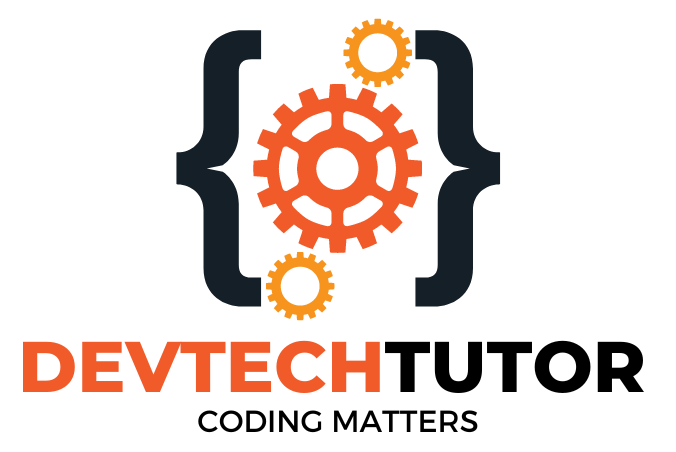In the fast-paced world of trading and investment, the ability to evaluate market conditions accurately is crucial. One of the most effective ways to do this is through financial statement analysis. Understanding how to read and interpret financial statements allows traders and investors to assess the financial health of companies, anticipate market trends, and make informed decisions.
This detailed guide will take you through the intricacies of financial statement analysis, breaking down complex concepts into easily digestible insights. Whether you’re a beginner looking to grasp the basics or an experienced trader seeking to refine your skills, this guide will equip you with the knowledge you need to navigate financial markets with confidence.
Theoretical Foundation: Understanding Financial Statements
1. Introduction to Financial Statements
Financial statements are formal records that provide an overview of a company’s financial performance and position. They are critical tools for investors, creditors, and other stakeholders to make informed decisions. The three main types of financial statements are:
- Income Statement
- Balance Sheet
- Cash Flow Statement
Each of these statements offers a different perspective on the company’s financial health, and together, they provide a comprehensive view of its operations and financial condition.
2. The Income Statement
The Income Statement, also known as the Profit and Loss Statement (P&L), summarizes a company’s revenues, costs, and expenses over a specific period, typically a fiscal quarter or year. It provides insights into a company’s profitability.
Key Components:
- Revenue: Total income generated from the sale of goods or services.
- Cost of Goods Sold (COGS): Direct costs attributable to the production of goods sold by the company.
- Gross Profit: Revenue minus COGS.
- Operating Expenses: Costs not directly tied to production, such as salaries and rent.
- Operating Income: Gross Profit minus Operating Expenses.
- Net Income: Total earnings after all expenses, taxes, and costs have been deducted from revenue.
Example: A company reports $500,000 in revenue and $300,000 in COGS. The Gross Profit is $200,000. If operating expenses total $100,000, the Operating Income is $100,000. After deducting taxes of $20,000, the Net Income is $80,000.
3. The Balance Sheet
The Balance Sheet provides a snapshot of a company’s financial position at a specific point in time. It outlines what the company owns (assets), what it owes (liabilities), and the shareholders’ equity.
Key Components:
- Assets: Resources owned by the company that have economic value.
- Current Assets: Cash, inventory, receivables, etc.
- Non-Current Assets: Property, plant, equipment, etc.
- Liabilities: Obligations the company must fulfill.
- Current Liabilities: Accounts payable, short-term loans, etc.
- Non-Current Liabilities: Long-term debt, deferred tax liabilities, etc.
- Equity: The residual interest in the assets of the company after deducting liabilities. This includes retained earnings and share capital.
Example: A company has $1,000,000 in assets, $600,000 in liabilities, and $400,000 in shareholders’ equity.
4. The Cash Flow Statement
The Cash Flow Statement tracks the cash inflows and outflows over a period, providing insights into how well the company generates cash to meet its operating expenses and debt obligations.
Key Components:
- Operating Activities: Cash flows from primary business operations.
- Investing Activities: Cash flows from buying and selling assets.
- Financing Activities: Cash flows from borrowing and repaying debt, issuing shares, etc.
Example: A company reports cash flow from operating activities of $150,000, cash used in investing activities of $50,000, and cash flow from financing activities of $70,000, resulting in a net increase in cash of $170,000.
Practical Guide: Financial Statement Analysis
5. Ratio Analysis: Evaluating Financial Health
Ratio Analysis is a powerful tool for assessing a company’s performance by comparing different financial metrics. It simplifies complex financial data and allows for comparison across time periods or with other companies.
Key Ratios:
- Profitability Ratios: Measure the company’s ability to generate profit relative to revenue, assets, equity, etc.
- Gross Margin: (Gross Profit / Revenue) x 100
- Operating Margin: (Operating Income / Revenue) x 100
- Net Margin: (Net Income / Revenue) x 100
Example: If a company has a Net Income of $80,000 and Revenue of $500,000, the Net Margin is 16%.
- Liquidity Ratios: Measure the company’s ability to cover short-term obligations.
- Current Ratio: Current Assets / Current Liabilities
- Quick Ratio: (Current Assets – Inventory) / Current Liabilities
Example: A company with Current Assets of $200,000 and Current Liabilities of $100,000 has a Current Ratio of 2.0.
- Solvency Ratios: Assess the company’s ability to meet long-term obligations.
- Debt to Equity Ratio: Total Liabilities / Shareholders’ Equity
- Interest Coverage Ratio: Operating Income / Interest Expense
Example: If a company has Total Liabilities of $600,000 and Shareholders’ Equity of $400,000, the Debt to Equity Ratio is 1.5.
6. Common-Size Financial Statements
Common-Size Statements express each item as a percentage of a base figure, facilitating comparison across companies or time periods.
Common-Size Income Statement: Express each item as a percentage of total revenue. Common-Size Balance Sheet: Express each item as a percentage of total assets.
Example: If a company’s total revenue is $1,000,000, and its COGS is $600,000, the COGS represents 60% of total revenue.
7. DuPont Analysis
DuPont Analysis is a technique that breaks down Return on Equity (ROE) into three components: profit margin, asset turnover, and financial leverage.
Formula: ROE = (Net Income / Revenue) x (Revenue / Assets) x (Assets / Equity)
Example: A company has a Net Income of $100,000, Revenue of $1,000,000, Assets of $500,000, and Equity of $200,000. The ROE would be calculated as follows:
- Profit Margin: $100,000 / $1,000,000 = 10%
- Asset Turnover: $1,000,000 / $500,000 = 2
- Financial Leverage: $500,000 / $200,000 = 2.5
- ROE = 10% x 2 x 2.5 = 50%
8. Cash Flow Analysis: Understanding Liquidity and Solvency
Cash Flow Analysis goes beyond just looking at profit; it examines how cash is generated and used, ensuring the company has enough liquidity to meet its obligations.
Operating Cash Flow: Indicates whether a company can generate sufficient cash from operations to sustain itself. Free Cash Flow: Cash available after capital expenditures, indicating the company’s ability to expand, pay dividends, or reduce debt.
Example: If a company has an Operating Cash Flow of $200,000 and Capital Expenditures of $50,000, its Free Cash Flow is $150,000.
9. Trend Analysis: Identifying Patterns Over Time
Trend Analysis involves comparing financial statements over multiple periods to identify patterns or trends. This can help in predicting future performance.
Example: A company’s revenue has been growing at an average annual rate of 10% over the last five years. This trend indicates strong market demand and potential for continued growth.
10. Comparative Analysis: Benchmarking Against Peers
Comparative Analysis involves evaluating a company’s performance relative to its industry peers. This provides context and highlights strengths or weaknesses relative to the competition.
Example: A company has a Gross Margin of 40%, while the industry average is 35%. This suggests the company is more efficient in managing production costs.
Real-World Scenarios and Practical Applications
11. Scenario 1: Analyzing a Tech Startup
A tech startup reports the following figures:
- Revenue: $2,000,000
- COGS: $1,200,000
- Operating Expenses: $500,000
- Net Income: $200,000
Analysis: The company’s Gross Margin is 40% ($800,000/$2,000,000), indicating a healthy profit margin for a startup. However, the Net Margin is 10%, suggesting high operating costs relative to revenue. A deeper dive into operating expenses could reveal opportunities for cost optimization.
12. Scenario 2: Evaluating a Manufacturing Firm’s Balance Sheet
A manufacturing company reports:
- Current Assets: $500,000
- Non-Current Assets: $1,500,000
- Current Liabilities: $300,000
- Long-term Debt: $700,000
- Shareholders’ Equity: $1,000,000
Analysis: The company’s Current Ratio is 1.67, indicating it can comfortably cover short-term obligations. The Debt to Equity Ratio is 0.7, suggesting a balanced capital structure with moderate leverage.
13. Scenario 3: Assessing Cash Flow for a Retail Chain
A retail chain reports:
- Operating Cash Flow: $300,000
- Investing Cash Flow: -$100,000
- Financing Cash Flow: $50,000
Analysis: The positive Operating Cash Flow indicates strong cash generation from core activities. The negative Investing Cash Flow reflects investments in growth, such as new stores or equipment. The Financing Cash Flow suggests the company is raising additional funds, possibly for expansion.
14. Scenario 4: Trend Analysis in the Automotive Industry
An automotive company’s revenue over five years:
- Year 1: $10 million
- Year 2: $12 million
- Year 3: $15 million
- Year 4: $18 million
- Year 5: $20 million
Analysis: The consistent revenue growth suggests a strong market position and successful product offerings. This trend analysis supports the company’s strategy of expanding its market share.
15. Scenario 5: Comparative Analysis of a Food and Beverage Company
A food and beverage company reports a Net Profit Margin of 12%, compared to the industry average of 8%.
Analysis: The higher-than-average Net Profit Margin indicates the company has a competitive advantage, possibly due to brand strength, cost efficiency, or premium pricing.
16. Practical Example 1: Using Ratio Analysis in Stock Selection
An investor is considering two companies:
- Company A has a P/E Ratio of 15 and a Dividend Yield of 3%.
- Company B has a P/E Ratio of 25 and a Dividend Yield of 1.5%.
Decision: Company A appears to offer better value with a lower P/E Ratio and a higher Dividend Yield, making it a potentially more attractive investment.
17. Practical Example 2: Cash Flow Analysis for Dividend Sustainability
A company has a Free Cash Flow of $2 million and pays $1.5 million in dividends annually.
Analysis: The positive Free Cash Flow indicates that the company can sustain its dividend payments, with room to spare for reinvestment or debt reduction.
18. Scenario 6: Evaluating Financial Health Before an Acquisition
A company considering an acquisition reviews the target’s financial statements:
- Revenue: $5 million
- Net Income: $500,000
- Total Assets: $8 million
- Total Liabilities: $3 million
Analysis: The target’s Debt to Equity Ratio is 0.6, indicating a manageable level of debt. The Net Margin of 10% is satisfactory, but the acquiring company should consider whether this aligns with its financial goals and risk tolerance.
19. Scenario 7: Analyzing a Declining Cash Flow in a Retail Business
A retail business sees a decline in Operating Cash Flow from $500,000 to $300,000 over three years.
Analysis: The decline in cash flow could indicate problems with inventory management, declining sales, or increasing costs. This trend could be a red flag, prompting further investigation.
20. Practical Example 3: DuPont Analysis for ROE Enhancement
A company with the following data:
- Net Income: $100,000
- Revenue: $1,000,000
- Assets: $500,000
- Equity: $200,000
Analysis: The ROE is 50%, but the company could enhance this by improving its profit margin, increasing asset turnover, or leveraging equity more effectively.
21. Scenario 8: Evaluating a Tech Company’s Balance Sheet for Investment
A tech company reports:
- Total Assets: $3 million
- Total Liabilities: $1.5 million
- Shareholders’ Equity: $1.5 million
Analysis: The company’s Debt to Equity Ratio is 1, suggesting balanced leverage. The Current Ratio is also healthy at 2.5, indicating good liquidity.
22. Scenario 9: Trend Analysis of a Pharmaceutical Company’s R&D Spending
A pharmaceutical company’s R&D expenses:
- Year 1: $50 million
- Year 2: $60 million
- Year 3: $70 million
- Year 4: $80 million
- Year 5: $90 million
Analysis: The increasing R&D spending reflects the company’s commitment to innovation, which could lead to future product launches and revenue growth.
23. Scenario 10: Comparative Analysis of Debt Levels in Utility Companies
Utility Company A and Company B:
- Company A: Debt to Equity Ratio of 1.2
- Company B: Debt to Equity Ratio of 0.8
Analysis: Company B has a lower Debt to Equity Ratio, suggesting it is less leveraged and potentially less risky, depending on its operational context.
24. Practical Example 4: Assessing Liquidity Before Short-Term Investing
An investor is considering short-term investments in a company with a Quick Ratio of 1.5.
Analysis: The Quick Ratio indicates that the company can meet its short-term liabilities, making it a safer option for short-term investments.
25. Practical Example 5: Using Common-Size Statements to Compare Companies
Two companies in the same industry:
- Company A: COGS is 50% of Revenue
- Company B: COGS is 60% of Revenue
Analysis: Company A has a lower COGS percentage, indicating better cost management and potentially higher profitability.
Conclusion: Mastering Financial Statement Analysis for Market Condition Evaluation
Financial statement analysis is an essential skill for traders and investors aiming to evaluate market conditions accurately. By understanding and applying the concepts covered in this guide, you can gain deeper insights into a company’s financial health, identify potential risks and opportunities, and make more informed investment decisions.
This comprehensive approach, combined with practical examples and real-world scenarios, will enable you to navigate the complexities of financial markets with confidence. Remember, consistent practice and continuous learning are key to mastering financial statement analysis.
Further Reading and Resources:
Welcome to DevTechTutor.com, your ultimate resource for mastering web development and technology! Whether you're a beginner eager to dive into coding or an experienced developer looking to sharpen your skills, DevTechTutor.com is here to guide you every step of the way. Our mission is to make learning web development accessible, engaging, and effective.












